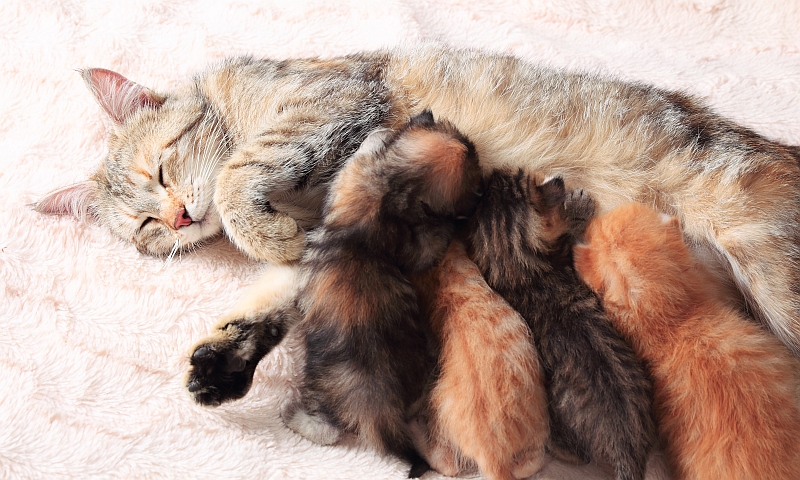As obligate carnivores, cats derive most of their protein (and consequently calories) from meat, fish, and other animal products. These dietary proteins provide all important amino acids which the cat body cannot produce independently. Deficiencies in any of these amino acids can lead to life-threatening health problems. It is important to note that vegetarian diets are not at all suited for cats.
Fat is the most important component of a cat’s diet as it provides high levels of energy, and enables the body to deliver fat-soluble vitamins to appropriate destinations. The percentage of fat in a cat’s diet can be as high as 50% without any adverse side effects. On the lower end, a cat’s diet should consist of no less than 9% fat. As an example of their importance at the most basic level, these fats contribute greatly to the health of a cat’s coat and skin.
Life Stages
Similar to dogs, cats also have different caloric requirements depending on the stage of life in which they find themselves.
Kittens: Once a kitten has been weaned, it needs about 200 calories per day regardless of size.
Pregnant or Nursing: Nursing cats (assuming a litter of 4 kittens) need between 300 and 1,100 calories per day depending on the size of the mother—the larger and heavier the mother the more calories she’ll need to sustain a healthy motherhood.
Domestic Cats (Lean): Domestic cats which are not overweight and have an average level of activity require between 170 and 450 calories per day, depending on their size/weight.
Domestic Cats (Overweight): If your cat is overweight (you should check with your vet to find out), the caloric needs should be kept under control, and should generally be about 20-25% lower than that of a lean domestic cat.
Exotic Cats: If you have an exotic cat or mix, then the caloric requirements will vary wildly (pun intended), and you should absolutely check with your veterinarian to determine the proper diet for your specific needs.
It is important to note that nursing mothers will lose weight during the 7 to 9 weeks when they are feeding their young. This is true whether they are fed a high number of calories, so it is important to make sure that they at least get the recommended number of calories, which may mean free-feeding during pregnancy and lactation.
Aside from fat and protein, cats also need a variety of vitamins and minerals the most important of which are: vitamins A, D, E, K B1, B6, B12, folic acid, riboflavin, niacin, pantothenic acid, calcium, phosphorus, magnesium, sodium, potassium, chlorine, iron, copper, zinc, manganese, selenium, and iodine.
If you are trying to figure out whether your cat is getting enough to eat, you can do so by observing and physically feeling the body of your cat. If your cat’s body feels bony, and there are not observable reserves of fat on its ribs, and the body narrows (caves in) right behind the ribs, then your cat is most likely not getting enough calories. If on the other hand your cat’s figure is more rounded, and there are obvious reserves of fat on the ribs, and around the face, then you are dealing with an overweight cat. An ideally healthy cat will have a well-proportioned body, with a slim (but not gaunt) waistline, and a bit of fat covering the ribs.

